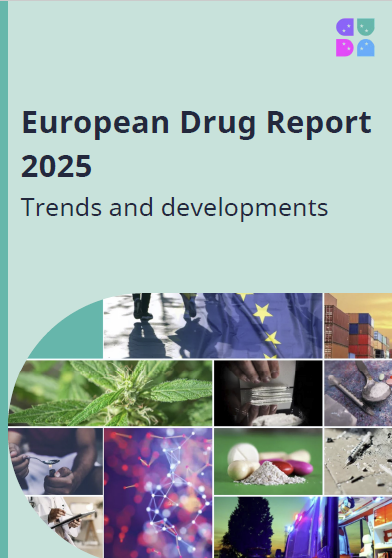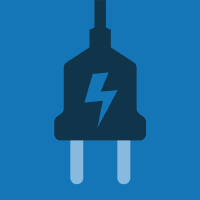European Drug Report 2025
European Drug Report 2025
ID 24586 | 14.09.2025 / Attached
Trends and developments
The drug situation in Europe up to 2025
This page draws on the latest data available to provide an overview of the current situation and emerging drug issues affecting Europe, with a focus on the year up to the end of 2024. The analysis presented here highlights some developments that may have important implications for drug policy and practitioners in Europe.
Understanding Europe’s drug situation in 2025 – key developments
Drug supply, production and precursors
Analysis of the supply-related indicators for illicit drugs in the European Union suggests that availability remains high across all substance types. On this page, you can find an overview of drug supply in Europe based on the latest data, supported by the latest time trends in drug seizures and drug law offences, together with 2023 data on drug production and precursor seizures.
Drug supply, production and precursors – the current situation in Europe
Cannabis
Cannabis remains by far the most commonly consumed illicit drug in Europe. On this page, you can find the latest analysis of the drug situation for cannabis in Europe, including prevalence of use, treatment demand, seizures, price and purity, harms and more.
Cannabis – the current situation in Europe
Cocaine
Cocaine is, after cannabis, the second most commonly used illicit drug in Europe, although prevalence levels and patterns of use differ considerably between countries. On this page, you can find the latest analysis of the drug situation for cocaine in Europe, including prevalence of use, treatment demand, seizures, price and purity, harms and more.
Cocaine – the current situation in Europe
Synthetic stimulants
Amphetamine, methamphetamine and, more recently, synthetic cathinones are all synthetic central nervous system stimulants available on the drug market in Europe. On this page, you can find the latest analysis of the drug situation for synthetic stimulants in Europe, including prevalence of use, treatment demand, seizures, price and purity, harms and more.
Synthetic stimulants – the current situation in Europe
MDMA
MDMA is a synthetic drug chemically related to the amphetamines, but with somewhat different effects. In Europe, MDMA use has generally been associated with episodic patterns of consumption in the context of nightlife and entertainment settings. On this page, you can find the latest analysis of the drug situation for MDMA in Europe, including prevalence of use, seizures, price and purity and more.
MDMA – the current situation in Europe
Heroin and other opioids
Heroin remains Europe’s most commonly used illicit opioid and is responsible for a large share of the health burden attributed to illicit drug consumption. Europe’s opioid problem, however, continues to evolve in ways that are likely to have important implications for how we address issues in this area. On this page, you can find the latest analysis of the drug situation for heroin and other opioids in Europe, including prevalence of use, treatment demand, seizures, price and purity, harms and more.
Heroin and other opioids – the current situation in Europe
New psychoactive substances
The market for new psychoactive substances is characterised by the large number of substances that have emerged, with new ones being detected each year. On this page, you can find an overview of the drug situation for new psychoactive substances in Europe, supported by information from the EU Early Warning System on seizures and substances detected for the first time in Europe. New substances covered include synthetic and semi-synthetic cannabinoids, synthetic cathinones, new synthetic opioids and nitazenes.
New psychoactive substances – the current situation in Europe
Other drugs
Alongside the more well-known substances available on illicit drug markets, a number of other substances with hallucinogenic, anaesthetic, dissociative or depressant properties are used in Europe: these include LSD, hallucinogenic mushrooms, ketamine, GHB and nitrous oxide. On this page, you can find the latest analysis of the situation regarding these substances in Europe, including seizures, prevalence and patterns of use, treatment entry, harms and more.
Other drugs – the current situation in Europe
Injecting drug use
Despite a continued decline in injecting drug use over the past decade in the European Union, this behaviour is still responsible for a disproportionate level of both acute and chronic health harms associated with the consumption of illicit drugs. On this page, you can find the latest analysis of injecting drug use in Europe, including key data on prevalence at national level and among clients entering specialist treatment, as well as insights from studies on syringe residue analysis and more.
Injecting drug use – the current situation in Europe
Drug-related infectious diseases
People who inject drugs are at risk of contracting infections through the sharing of drug use paraphernalia. On this page, you can find the latest analysis of drug-related infectious diseases in Europe, including key data on infections with HIV and hepatitis B and C viruses.
Drug-related infectious diseases – the current situation in Europe
Drug-induced deaths
Estimating the mortality attributable to drug use is critical for understanding the public health impact of drug use and how this may be changing over time. On this page, you can find the latest analysis of drug-induced deaths in Europe, including key data on overdose deaths, the substances implicated and more.
Drug-induced deaths – the current situation in Europe
Opioid agonist treatment
Opioid users represent the largest group undergoing specialised drug treatment, mainly in the form of opioid agonist treatment. On this page, you can find the latest analysis of the provision of opioid agonist treatment in Europe, including key data on coverage, the number of people in treatment, pathways to treatment and more.
Opioid agonist treatment – the current situation in Europe
Harm reduction
Harm reduction encompasses interventions, programmes and policies that seek to reduce the health, social and economic harms of drug use to individuals, communities and societies. On this page, you can find the latest analysis of harm reduction interventions in Europe, including key data on opioid agonist treatment, naloxone programmes, drug consumption rooms and more.
Harm reduction – the current situation in Europe
































